Concealed carry might seem like a new phenomenon, but ever since handguns existed, we’ve tried to make them smaller, easier to carry, and ultimately easier to conceal.
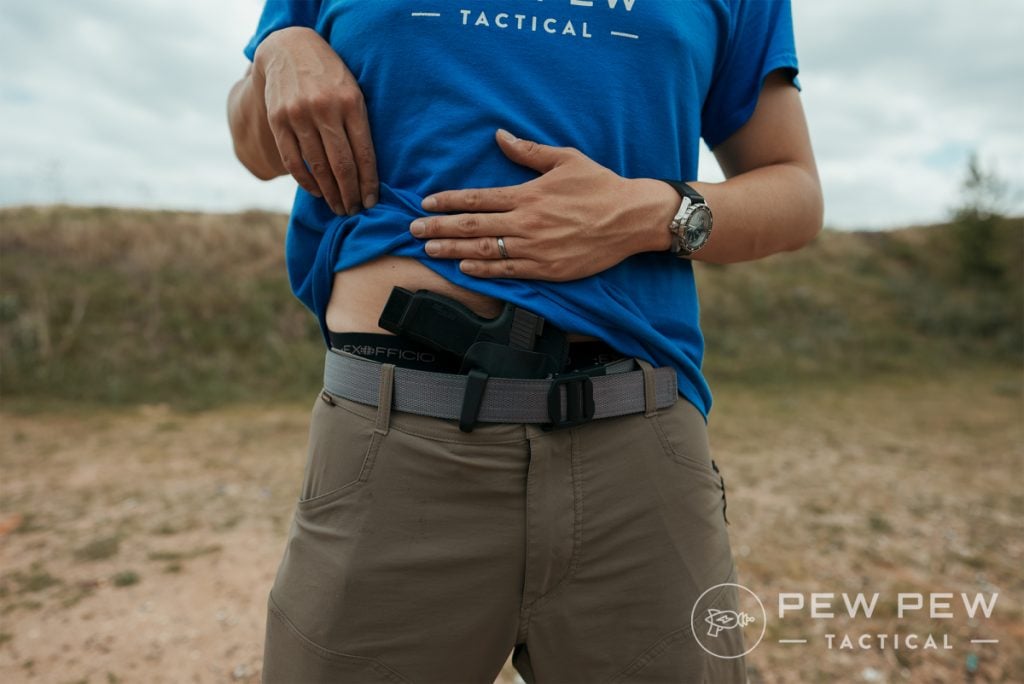
Today we’re exploring the history of concealed carry guns from 12th century China to 2022.
So follow along as we walk through the history of concealed carry…from past to present.
Table of Contents
Loading…
First Handguns
The first handguns are arguably the smaller versions of Chinese hand cannons.
These rudimentary weapons came to be in the late 1200s, and the earliest known example is the 7.83-pound Heilongjiang hand cannon.
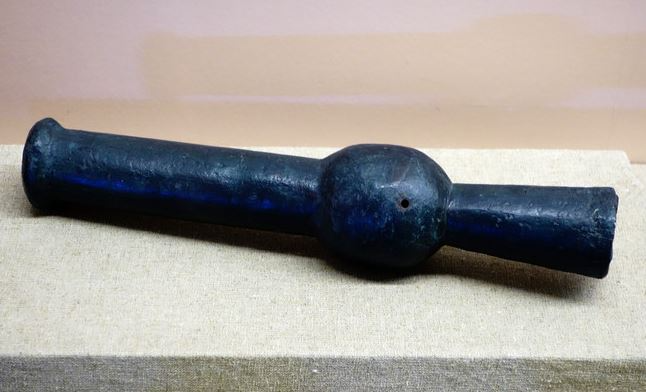
Not exactly a good IWB rig…
After hand cannons, we had matchlocks which appeared in the 15th century. These guns used a rudimentary slow-burning match to ignite a pan of powder that ignited the main charge in the gun.
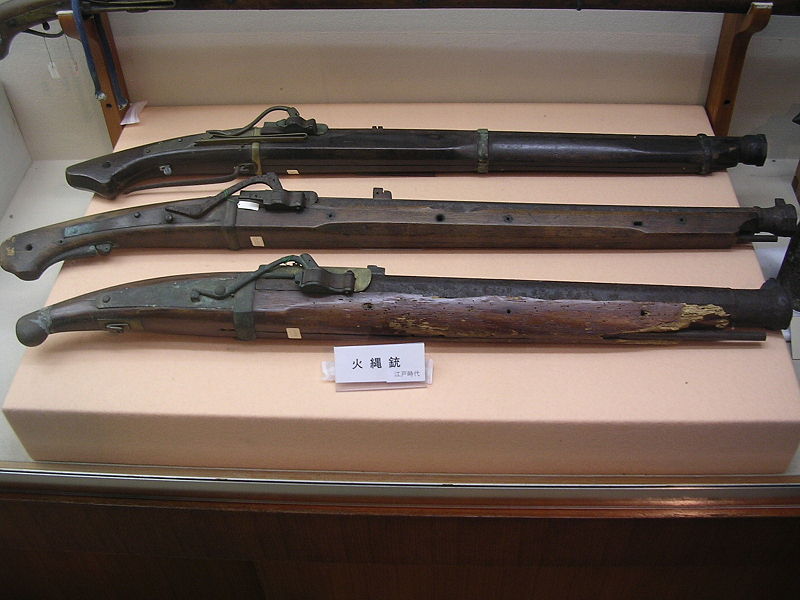
The smoke from a constantly burning match might give away the matchlock in your PHLster Floodlight.
While small matchlocks were made, they weren’t exactly a concealed career option. It’s not until 1500 that we see the first glimmer of a real concealed carry pistol.
Wheellock Guns
Match lock made concealment somewhat impossible, but wheellock pistols changed the nature of firearms.
Without a burning match, you could (somewhat) safely toss a gun in your pocket and carry on with your day.
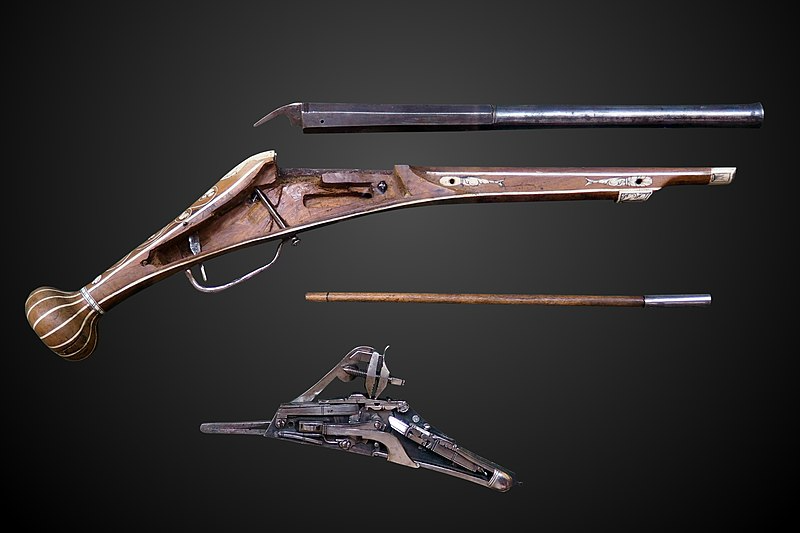
Wheellocks are like giant, deadly Bic lighters. When the trigger is pulled, a spring-loaded steel wheel rotates against a piece of pyrite, which creates sparks and ignites the gunpowder in the pan, which ignites the rest of the gunpowder in the gun’s barrel.
Wheellocks could be made to be relatively short.
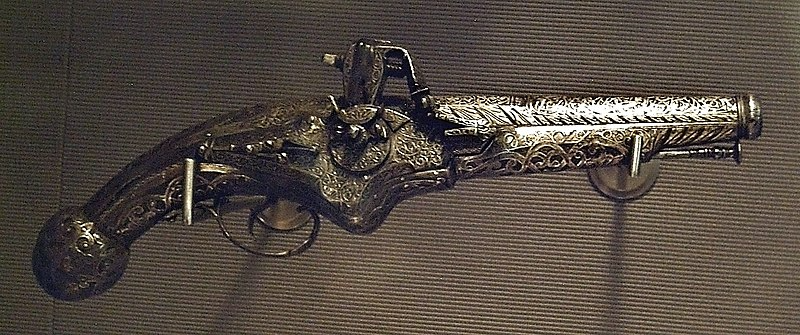
In particular, Calvary and Officer’s models were small enough to be concealed. Their small size and ease of concealment made them targets for early gun control laws.
They became a popular choice for assassins, with William the Silent being murdered with a concealed wheellock.
Flintlock Coat & Belt Pistols
All my homies love Flintlock, and it’s because Flintlocks gave us what can essentially be considered the first real concealed carry firearm.
Wheellocks could be carried concealed, but Flintlocks are where the concept of a concealed pistol really caught on.
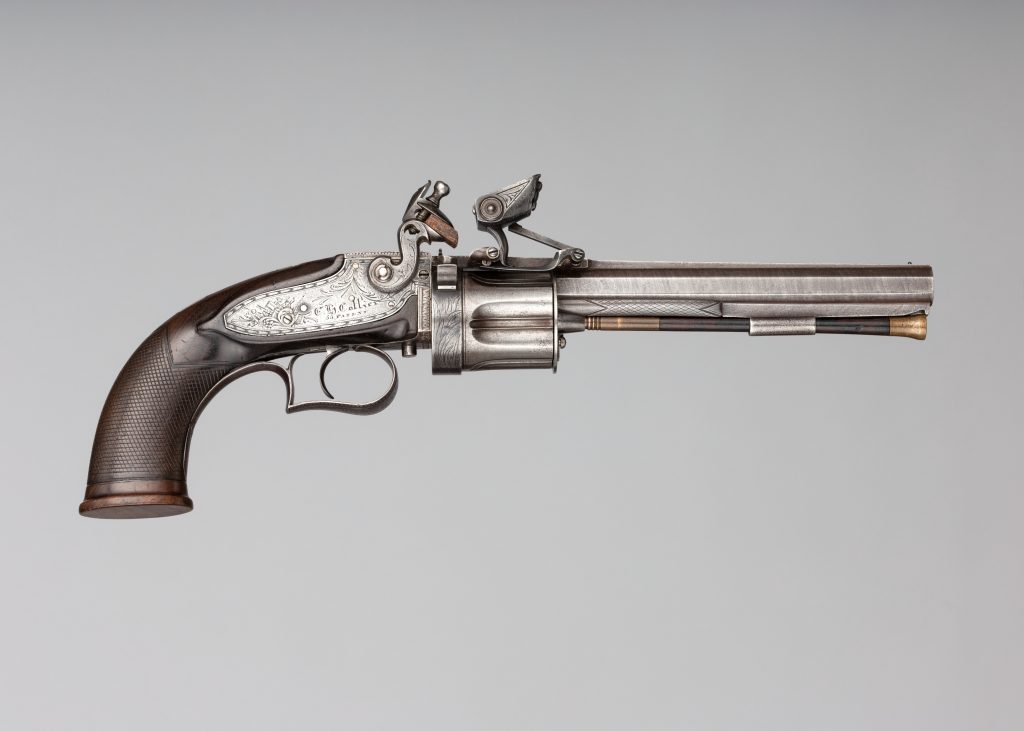
Flintlocks mainly provided the same benefits as matchlocks without the complexity. They attached a piece of flint to a hammer. The trigger dropped the flint-equipped hammer, and the flint hits something called a frizzen, which creates sparks.
The frizzen moves out of the way as the hammer drops and reveals a pan with a small amount of gunpowder, igniting and igniting the main charge of gunpowder.
Flintlocks came in all sizes but typically didn’t have designated official names. The smallest was known as coat pistols.
As the name implies, they were carried in the pockets of coats.
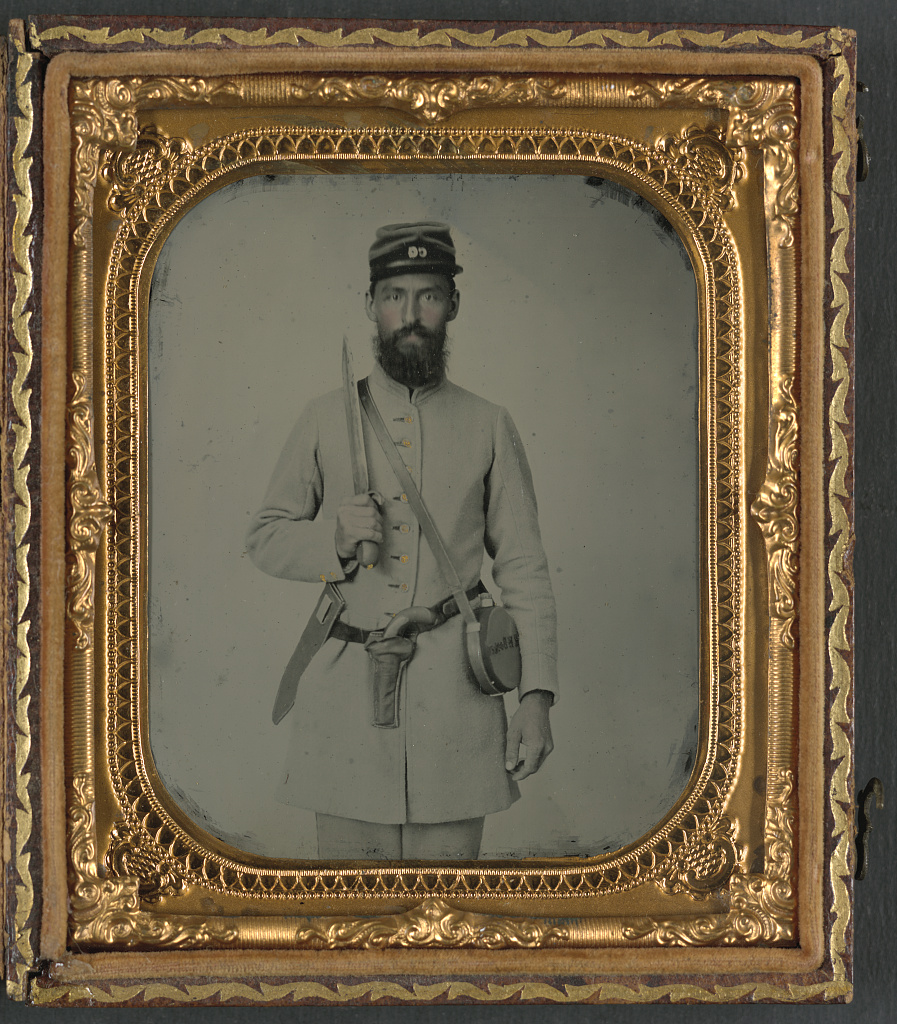
Belt pistols were somewhat larger but still compact. They gained their name due to the attachment of belt hooks.
These hooks allowed the shooter to position the gun on their belt and conceal it under a coat or jacket.
Coat and belt pistols were popular worldwide and were commonly used to deter highwaymen and similar violent criminals…kind of like a modern version of the Clipdraw.
Philadelphia Deringer
Caplock pistols would replace flintlock design and further improve the reliability of weaponry.
The caplock used a percussion cap that sat on a tip facing the barrel full of gunpowder. When the hammer struck the cap, it lit a spark, igniting the gunpowder and firing the weapon.
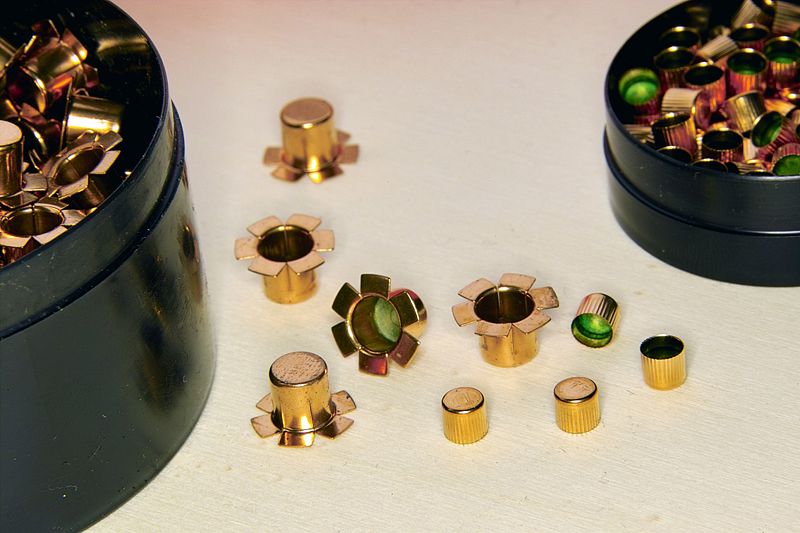
It wasn’t uncommon to see small pistols made with the caplock design. They were often in the similar vein of flintlock coat and belt pistols.
One specific design that stands out is the Derringer.
Henry Deringer designed the Philadelphia Deringer as a purpose-built concealed carry weapon.
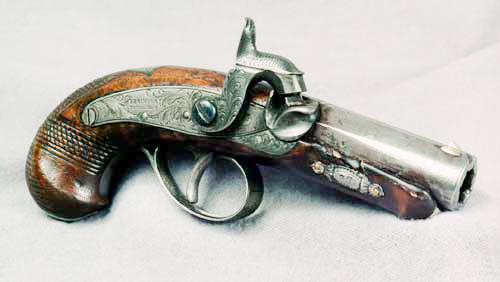
It was incredibly small, therefore easy to conceal, and became popular with the average, everyday Joe who needed to defend himself.
Deringer became Derringer after John Wilkes Booth killed Abraham Lincoln, and reports often misspelled Deringer as Derringer.
It’s since become the name applied to ultra-small, single, or double-barrel guns. Derringers would stick around throughout the invention of metallic cartridges and today.
Percussion Era
Before the revolver, as we know, became popular, the pepperbox ruled. A pepperbox happens when you take a revolver’s cylinder and turn each chamber into its own barrel.
Pepperbox was designed initially for the civilian market. Small pepperbox guns initially used percussion designs but would jump to metallic cartridges later.
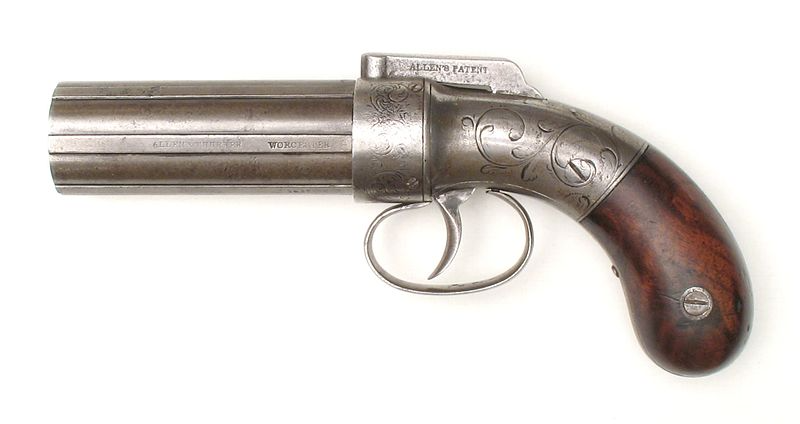
Of the percussion designs, the Allen and Thurber designs were the most famous and gained the title of the “Gun that won the East.” These guns were made in various sizes but were aimed at the civilian market.
They lacked sights and were known as point-and-shoot weapons, and the pocket models chamber .29 to .30 caliber balls. Mark Twain quipped, “Sometimes all its six barrels would go off at once, and then there was no safe place in all the region round about, but behind it.”
Pocket Revolver
The percussion era also brought up percussion revolvers.
Colt’s famous work made revolvers a mainstream weapon. The Colt revolver gave shooters a repeating gun with a single barrel, sights, and an option much smaller and lighter than the pepperboxes.
The Colt Pocket Percussion Revolvers encompass a variety of revolvers, including the Baby Dragoon, the Revolving pocket Pistol, and likely some I’m missing. These were Colt-style frames similar to the Navy and Army models but smaller.
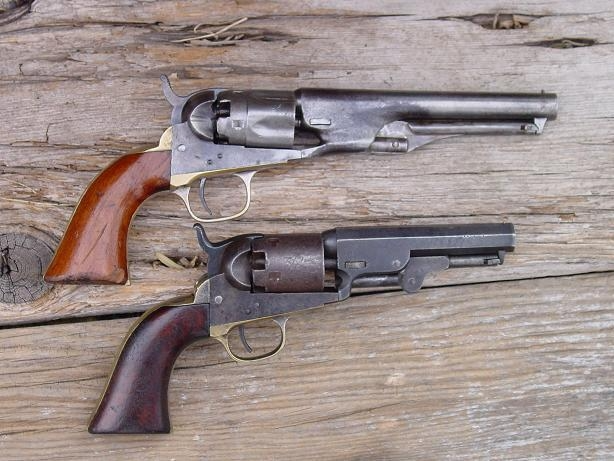
To be clear, the pistols looked very similar, but these weren’t just Army and Navy Models with short barrels. These were more compact in every way.
They were first produced with chamberings running from .28 to .31, although later models would accommodate .36 caliber balls.
They became popular with civilians needing concealable revolvers but also with Army officers who preferred the lighter-weight gun over the large Army and Navy models.
Other companies smelled success, and Remington, Adams, Webly, and more made pocket percussion revolver models.
Metallic Cartridge Era
Take everything from the percussion era and hit fast forward, and they all slowly became metallic cartridge weapons.
Derringers and pepperboxes went metallic cartridges, as did revolvers of all shapes and sizes. The Metallic Cartridge Era ushered in a new generation of concealable pocket pistols.
Standout super small pocket revolvers included guns like the Smith & Wesson Model 1, Colt House Revolver, Colt Model 1855 Sidehammer, and Remington Smoot.
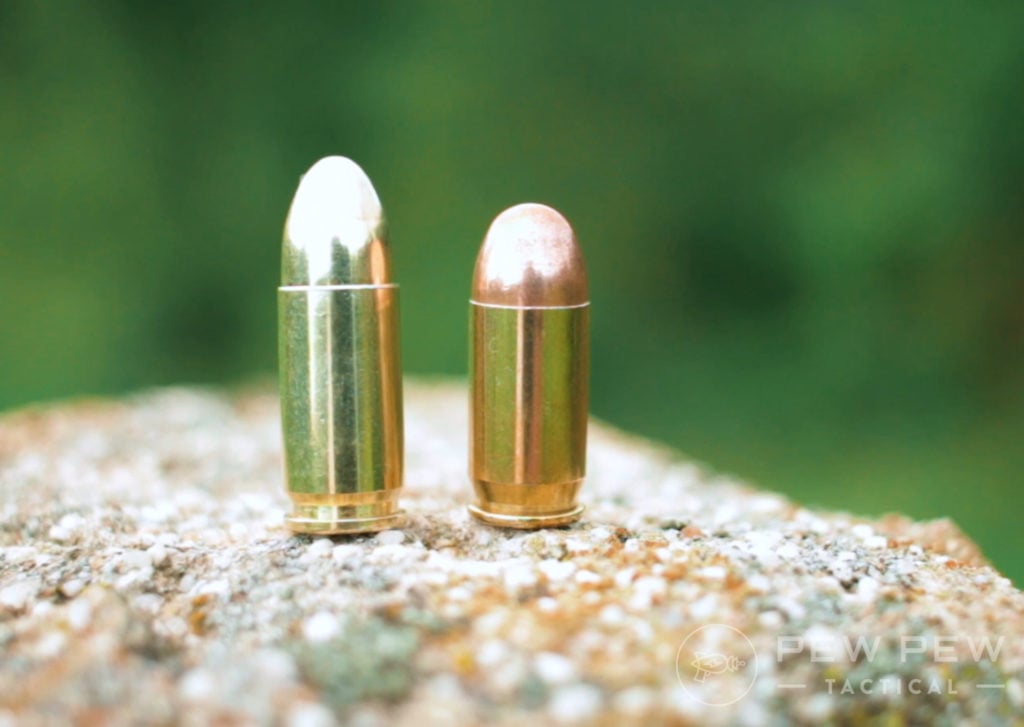
These things are adorably small and would drop into a pocket with ease.
Colt ruled the industry with the famed Single Action Army, a.k.a. the Peacemaker. This gun defined the Old West, and shorter models of the weapon were produced — the Glock 19 of their time.
Colt trimmed the barrels to three or three and a half inches, and they became colloquially known as Sheriff models, Shopkeepers, and Barkeeps.
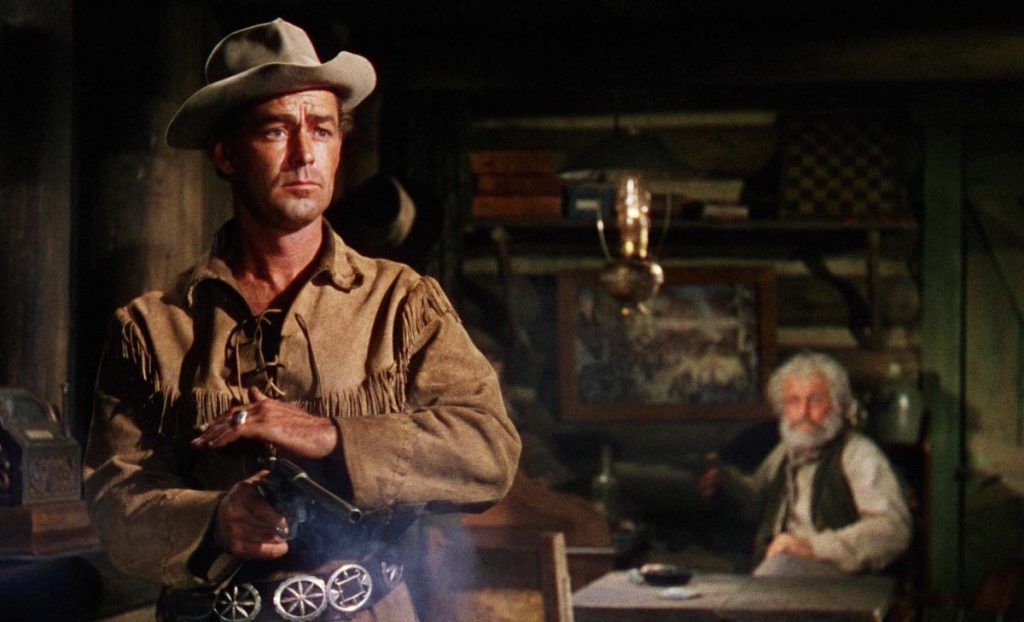
The company introduced the double-action M1877 in various sizes and calibers, including the small .32 Long Colt and 2.5-inch barrel options.
The Smith & Wesson Safety Hammerless was released in 1887 and gave the world a DAO-only revolver with a concealed hammer. That design choice, paired with short barrels and .32 and .38 S&W loadings, made these an innovative option that still inspires revolvers to this day.
This pistol stayed in production until
Browning & the Small Automatic
In the early 1900s, the rise of semi-auto pistols became apparent. Small automatics, in particular, became quite popular.
John Browning worked with Colt and FN to produce the first successful concealed carry automatic pistols.
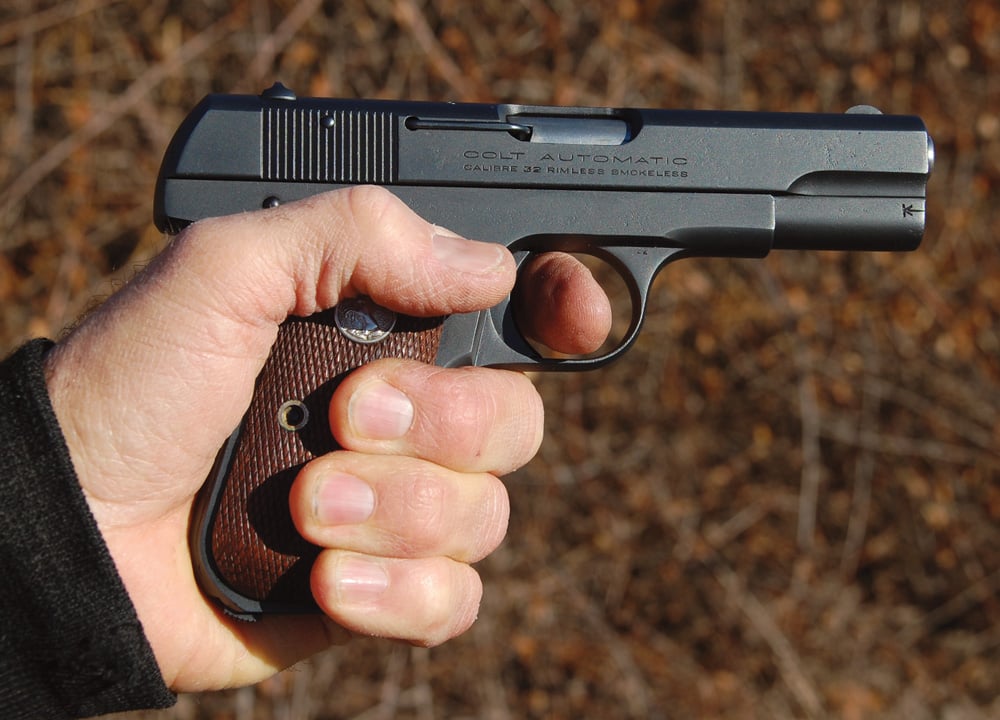
FN brought the Model 1900 to market as the first gun with a slide, and following it came the Colt Model 1903 Pocket Hammerless.
These were both pretty large pistols by today’s standards but were relatively thin and easy to conceal with the fashion at the time, making it reasonably easy to hide these larger guns.
Browning produced the first real pocket pistol of the modern age in 1905, and it became known as the FN Model 1906.
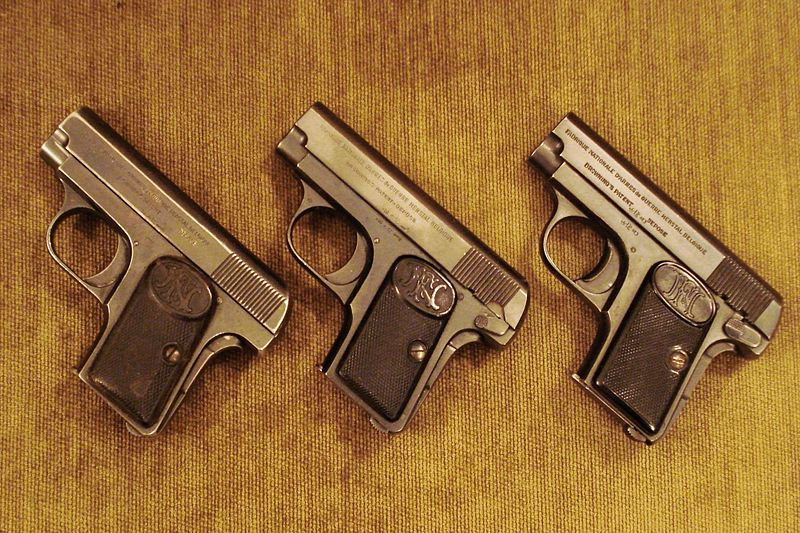
Let’s talk tiny. The gun had a 2.1-inch barrel, an overall length of 4.5 inches, and weighed 12.9 ounces. Browning’s little pistol chambered the .25 ACP cartridge and used a simple blowback design.
It became known as the Vest Pocket pistol because of its small size. Colt would market the design in the states as the 1908 Vest Pocket. It would form the basic design for FN Model 1910 and the Baby Browning.
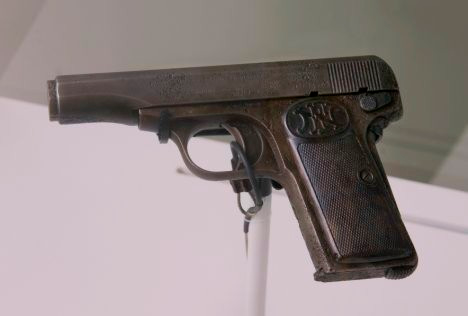
Browning’s Model 1910 was very similar to the M1906 design but larger, chambering the .32 ACP or .380 ACP. It still disappeared easily enough at a little over 6 inches long. FN’s pistol was robust, reliable, and accurate and remained in production until 1983.
Princip killed Archduke Franz Ferdinand of Austria with a Model 1910 and started World War I.
Europe tended to prefer the small automatic, and they became prolific across the continent, but plenty made their way to the States.
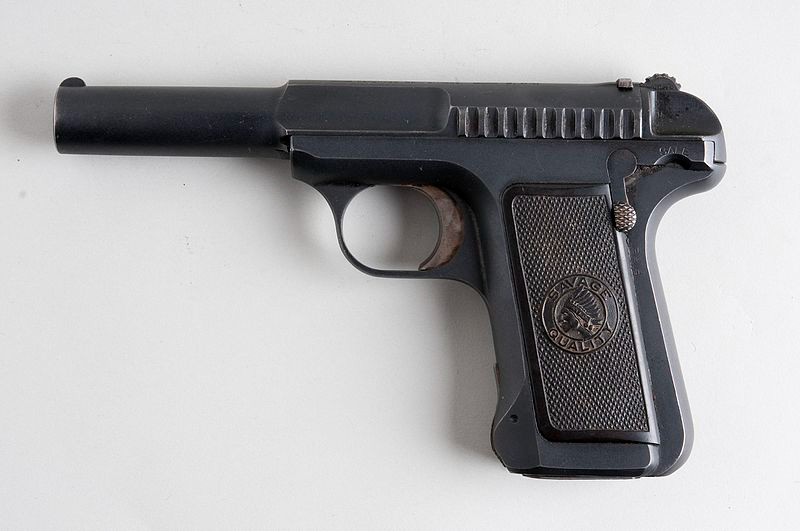
The Savage M1907 stands out as an interesting and innovative pistol. Savage got real gunfighters like Bat Masterson to help advertise the pistol and its “10 shots quick” tagline.
Talk about influencer marketing.
Modern Snub Nose Revolver
While semi-autos weren’t unpopular, the American cowboy DNA had us clinging to revolvers.
In the 1920s, a Colt employee named John Henry Fitzgerald began modifying Colt Police Positive Special revolvers. He cut the barrel to 2 inches, shortened the ejection rod, bobbed the hammer spur, rounded the butt, and cut off the front part of the trigger guard.
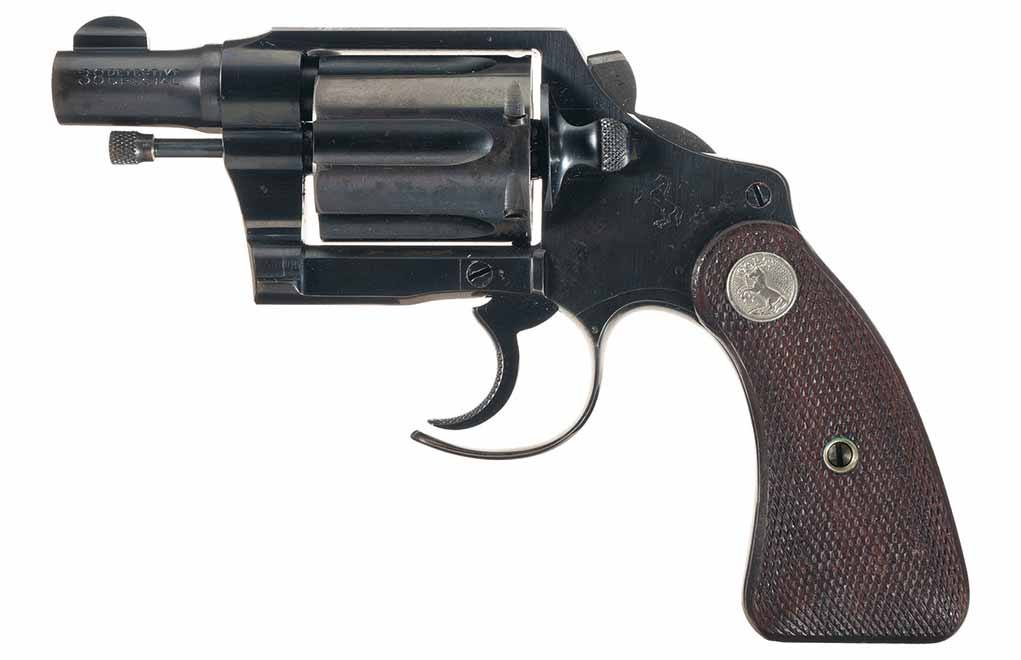
These guns became known as Fitz Specials and were the first modern swing-out cylinder concealed carry revolvers.
Colt found themselves impressed by the Fitz Special and decided to produce the Detective Special. Colt’s famed Detective Special trimmed the barrel and rounded the butt, leaving the hammer spur and trigger guard intact.
This became an instant success in 1927, and the firearms industry took note.
Thus, the age of the snub-nose revolver was born. Cops and crooks alike adored the gun, and Bonnie of Bonnie and Clyde famed had one taped to her thigh when she died.
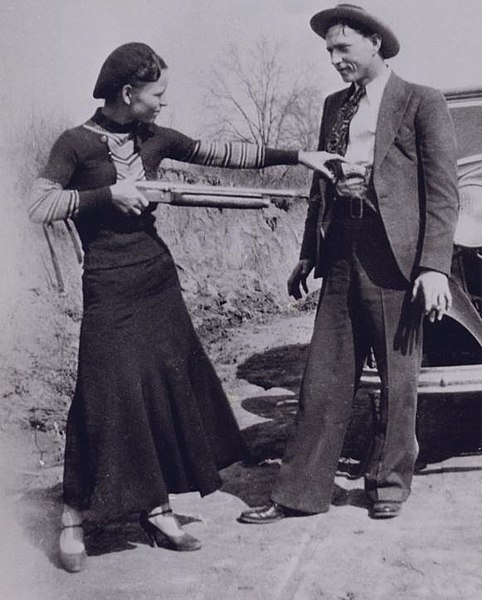
Small Pistols, Small Calibers
After the 1920s, there wasn’t a ton of innovation in the small, concealable firearm arena. Snub nose revolvers ruled, as did small automatics.
Names like Colt and Smith & Wesson ruled the revolver world with the Model 10 and later Model 36 and the Detective Special models.
Walther’s PPK became popular, and the 1911 shrunk to Commander-sized models. There are only a few guns that really stand out until we get into a few niche weapons.
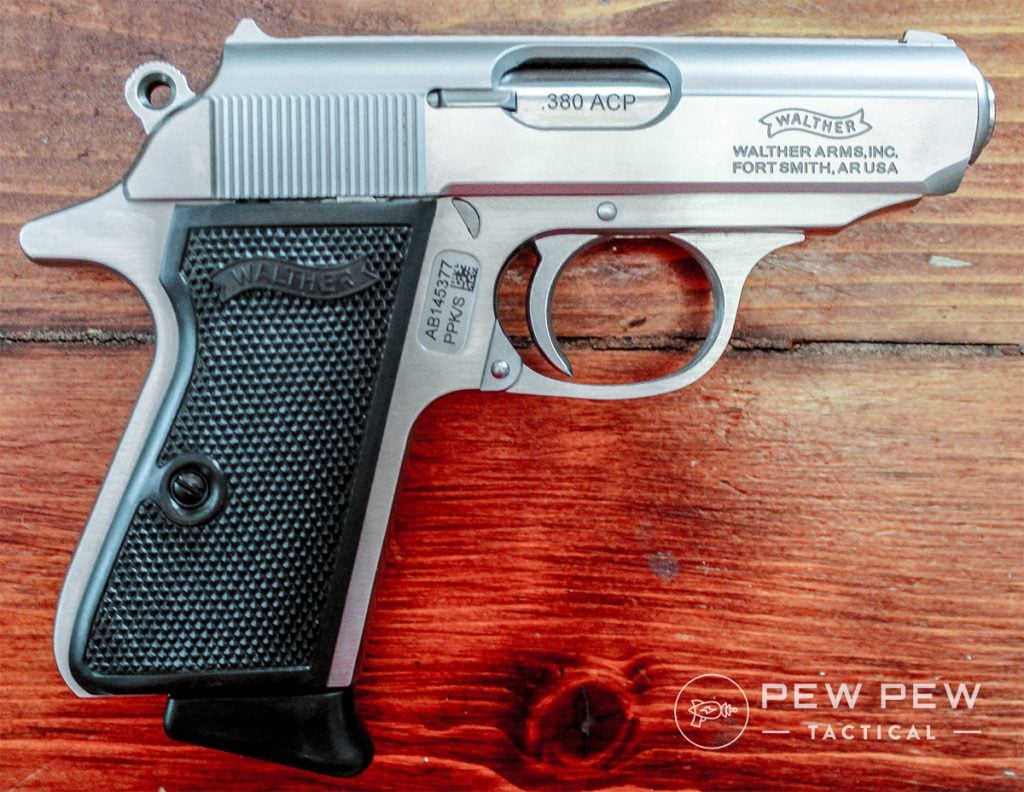
In the 1960s, Paris Theodore took the double-action Smith and Wesson Model 39 and began experimenting with making it smaller and more concealable.
The ASP was born, and Theodore trimmed the barrel, slide, and frame, melted the corners to make it snag-proof, bobbed the hammer, and removed the front sight.
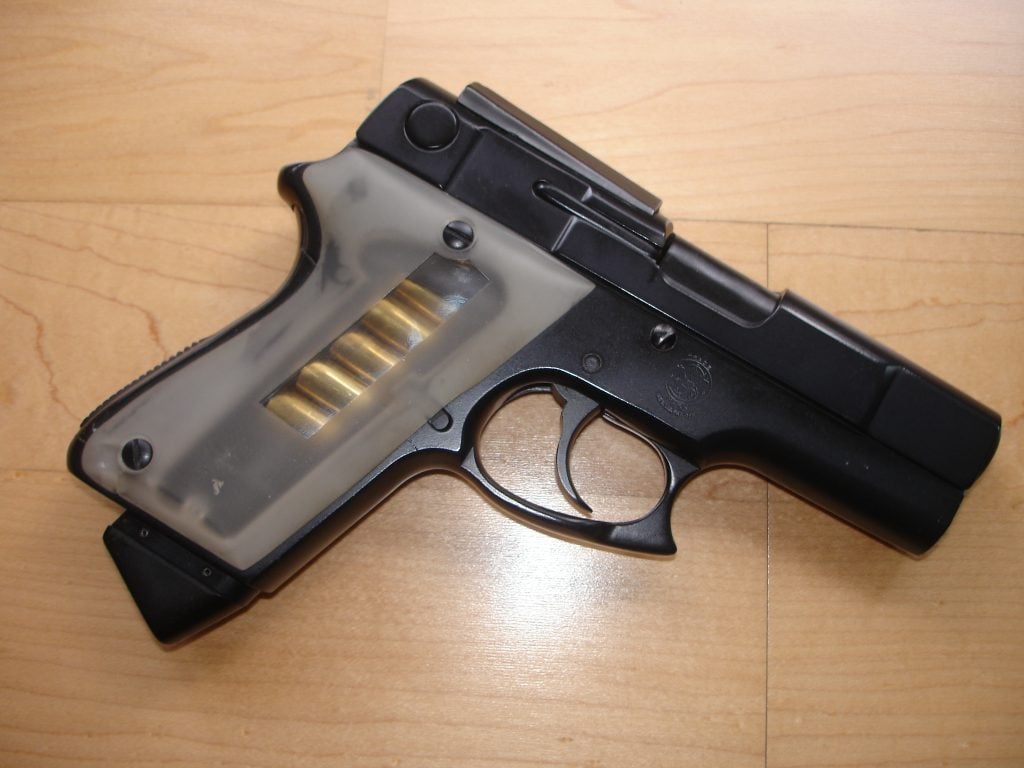
The weapon eased a trench sight designed for fast and accurate shots. Theodore also replaced the grips with clear Lexan grip panels and custom magazines that allowed the shooter to see how many rounds were left in the gun.
In 1978 Arcadia Machine and Tool produced one of the first pocket pistols in the form of the AMT Backup .380 ACP.
AMT produced Backups in various calibers, but the .380 ACP represents a blueprint for the next generation of modern pocket pistols.
This 1911ish-inspired pistol used a striker-fired system and a trench sight. It was only 5 inches long in total. Alongside the AMT, the Seecamp LWS 32 hit the streets in the mid-1980s and is still one of the smallest pocket pistols.
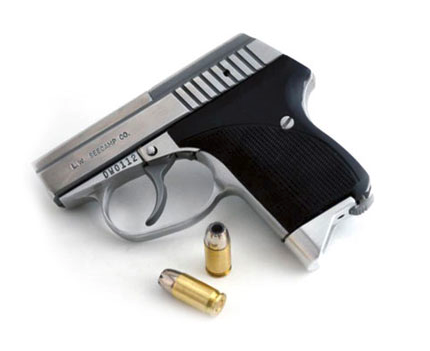
Subcompacts
In the late 1980s, the 9mm began its climb to the top. Everyone was producing, or would soon be producing a double stack 9mm handgun.
Alongside these wonder 9s, we began to get subcompact variants.
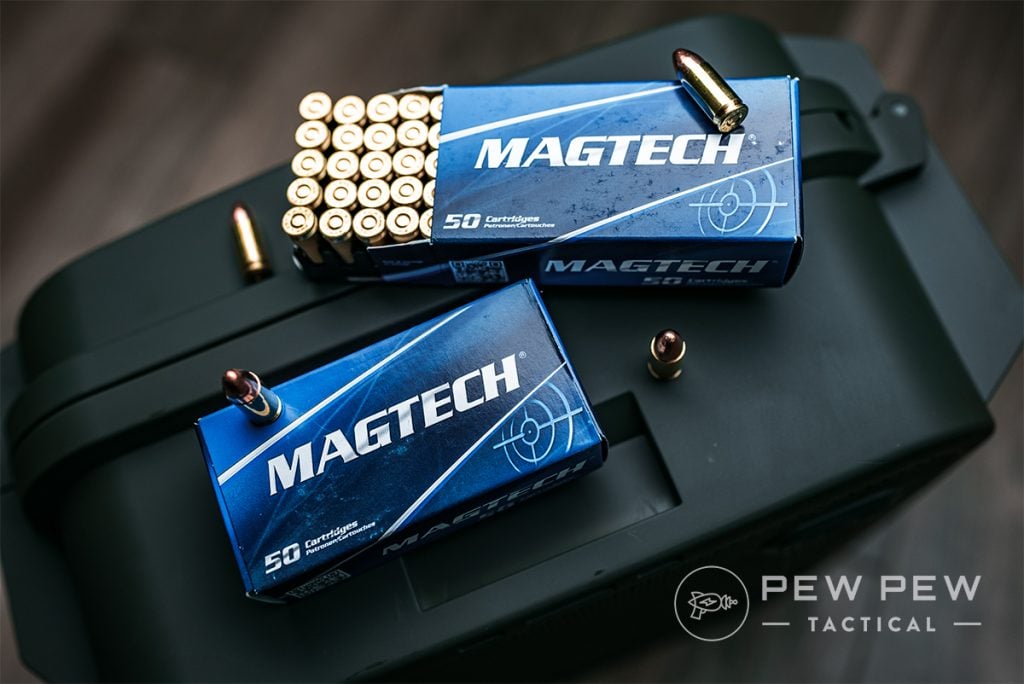
In 1995, the Glock 26 came along and perfectly exhibited the subcompact generation.
Companies just trimmed the barrel, slide, and frame to be smaller. They produced stubby little versions of their bigger handguns.
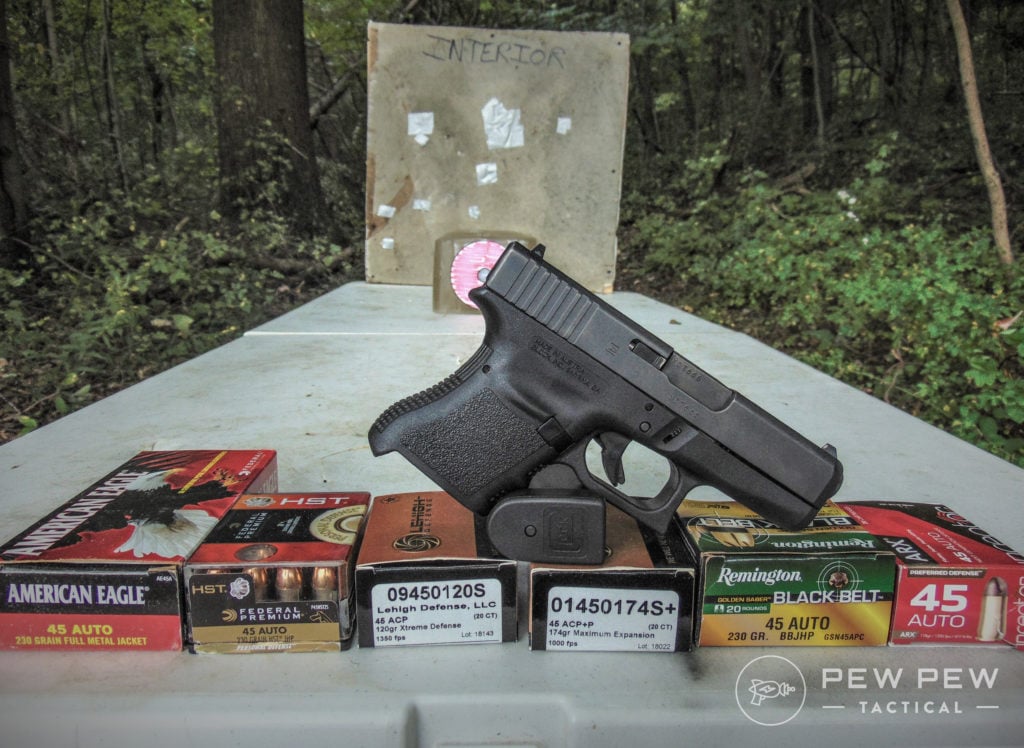
S&W gave us the third-generation pistols with subcompact models, including an automatic version of the Chief’s Special and the concealable Ladysmith automatic.
These guns were basically the same design as their larger brethren, just smaller. They were more concealable but quite thick and stout.
We also began to see the first single-stack 9mms in guns like the Sig Sauer P239, but they would have their renaissance until the mid-2000s.
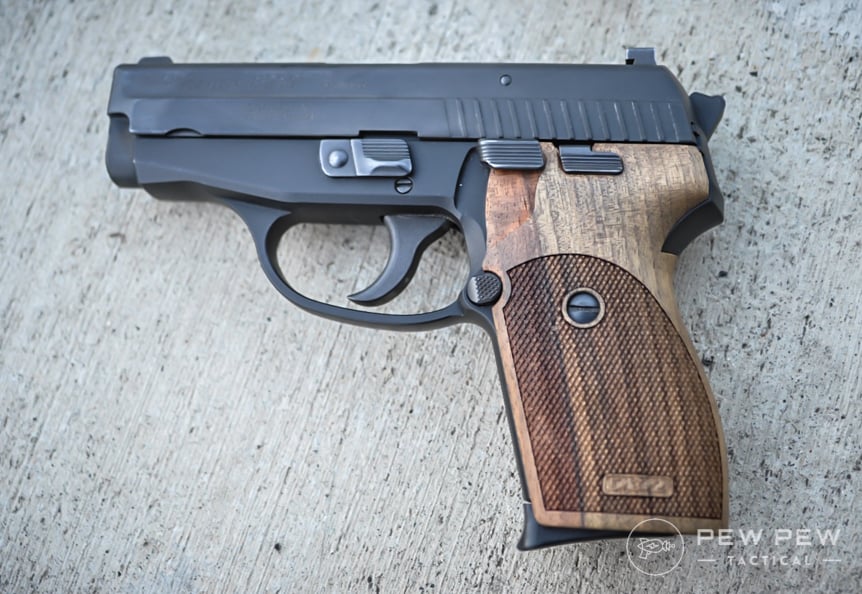
Modern Pocket Pistols & Single Stack 9mms
Concealed carry went mainstream in the early 2000s, and it grew rapidly. By 2008 companies saw the writing on the wall and realized this was a huge, somewhat underserved market.
Many average joes found the brick-like subcompacts too much to carry, and they went small.
Guns like the Ruger LCP and S&W Bodyguard .380 ACP started the modern genre of pocket pistols.
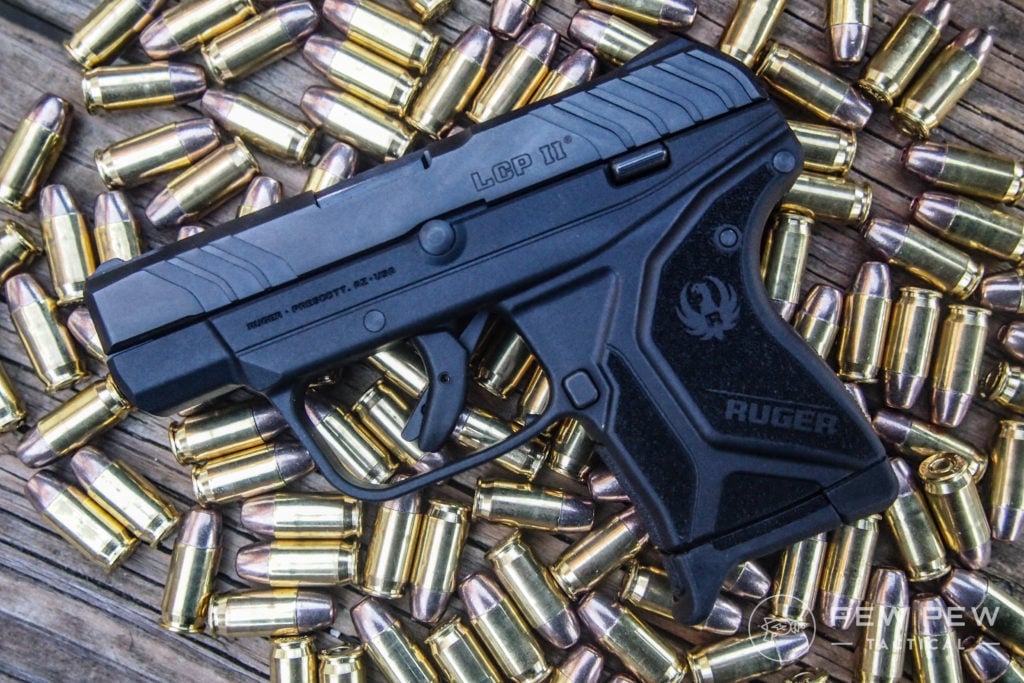
These uber-small .380 ACP guns could easily squeeze into a pocket. They were super thin, utilized polymer frames for weight savings, and were tough to shoot.
Long trigger pulls, barely visible sights, and snappy recoil made them unpleasant, but they sold like hotcakes. Eventually, everyone got in on the pocket .380 goldrushes, including Sig Sauer, Glock, Taurus, and Beretta.
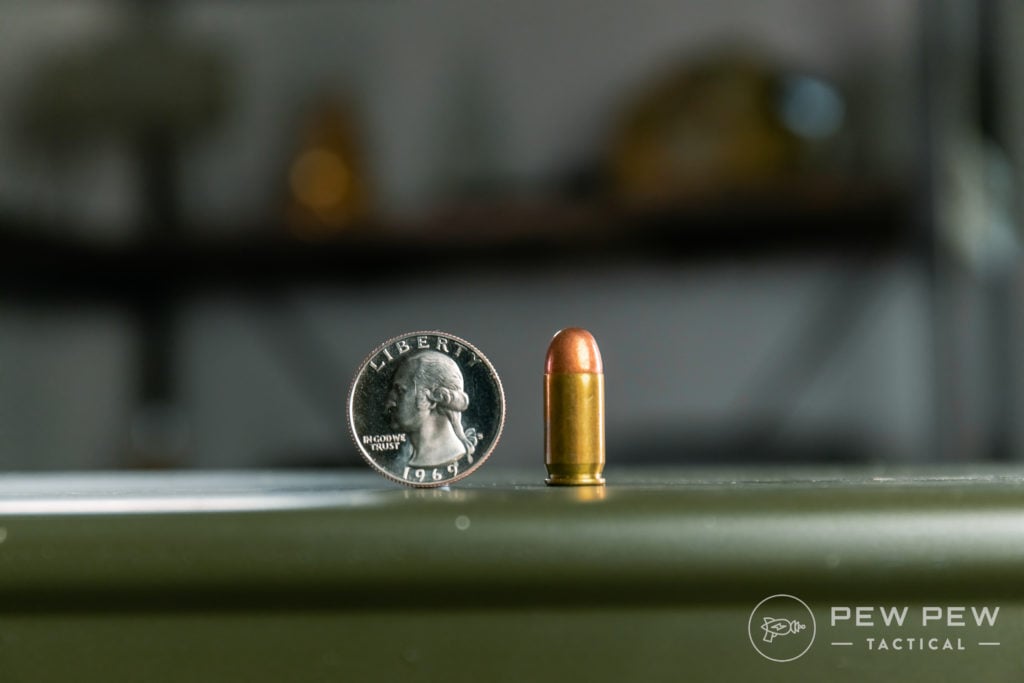
While pocket .380s were fine, another gold mine was found in the 2010s: the single stack 9mm.
Companies knew subcompacts were too blocky, and pocket .380s weren’t the best fighting tools. They mixed and matched, and we got the single stack 9mm.
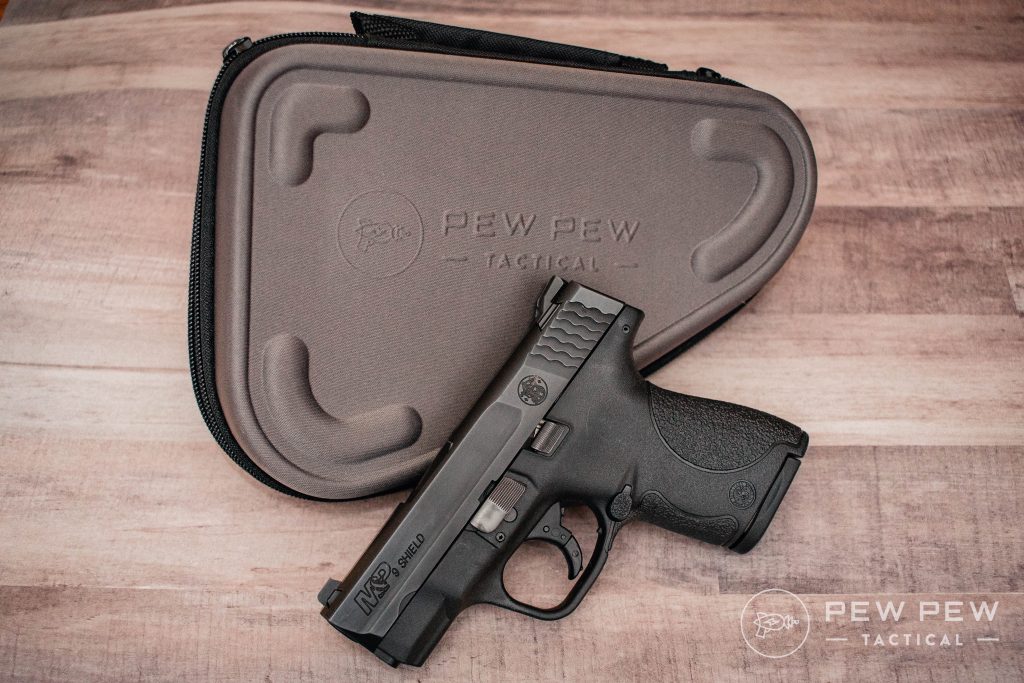
The Springfield XD-S and S&W Shield captured most of the market when they both came to be in 2012.
However, the Walther PPS predated both and was released in 2007 but sadly remained an underrated option.
After that, everyone wanted a single stack 9mm, and everyone got one.
Micro Compacts
When everyone got comfy with their S&W Shields and Glock 43s, Sig Sauer broke the market.
In January of 2018, Sig debuted a brand-new pistol – the P365, a gun the size of a single stack 9mm but capable of holding 10 rounds.
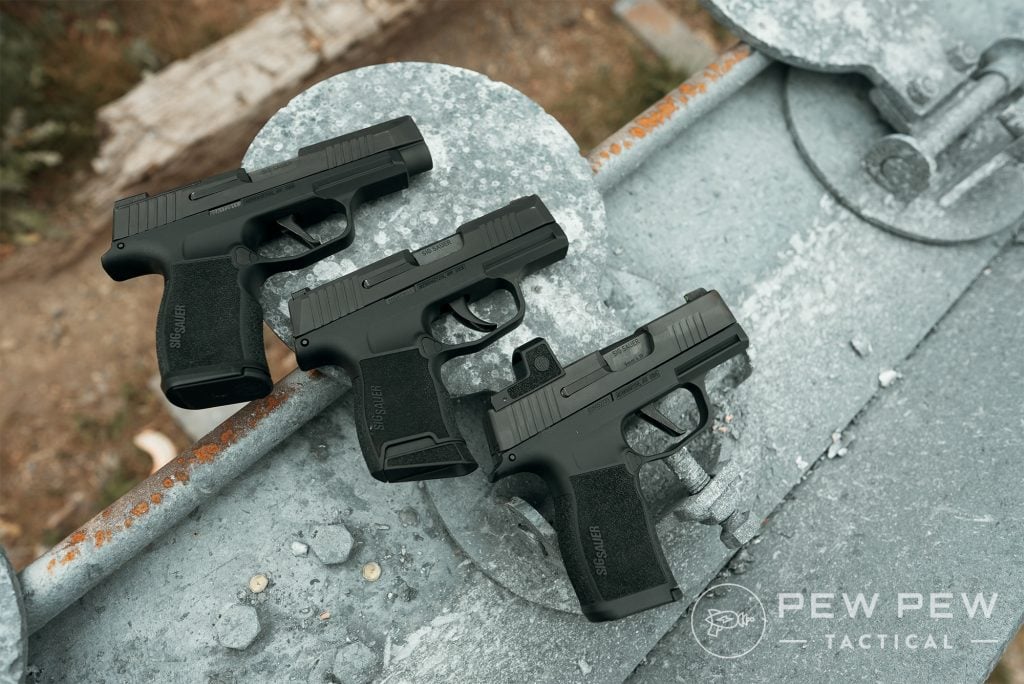
They did this with a new magazine design that blended a double and single-stack magazine.
Overnight every single stack 9mm on the market was outdated.
The rein of the micro compact began, and everyone jumped on board. S&W, KelTec, Taurus, Springfield, and even Kimber wanted a piece of the pie.
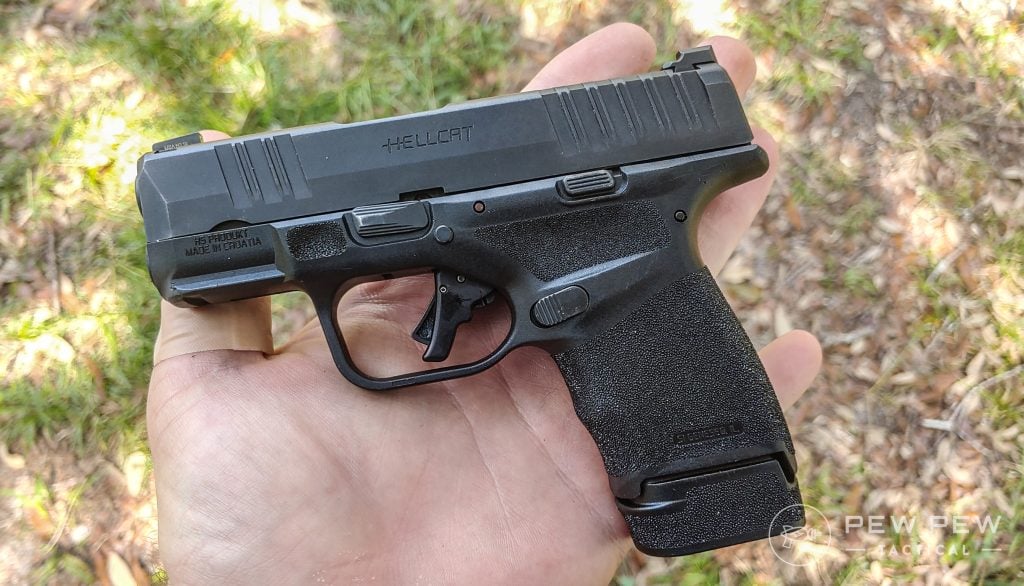
Final Thoughts
That brings us to today…the micro compact rules, and it’s not going anywhere anytime soon.
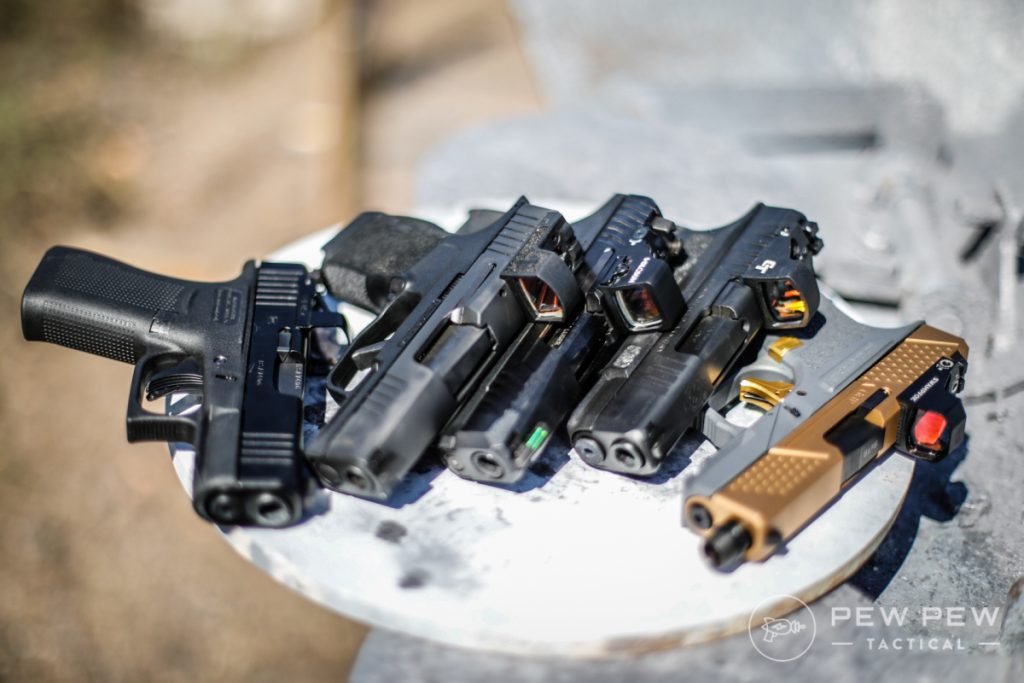
Which leaves me wondering, what’s next?
What do you think is on the horizon? Let us know in the comments below! Need a good, concealed carry pistol? Read our recommendations on the Best Concealed Carry Guns.

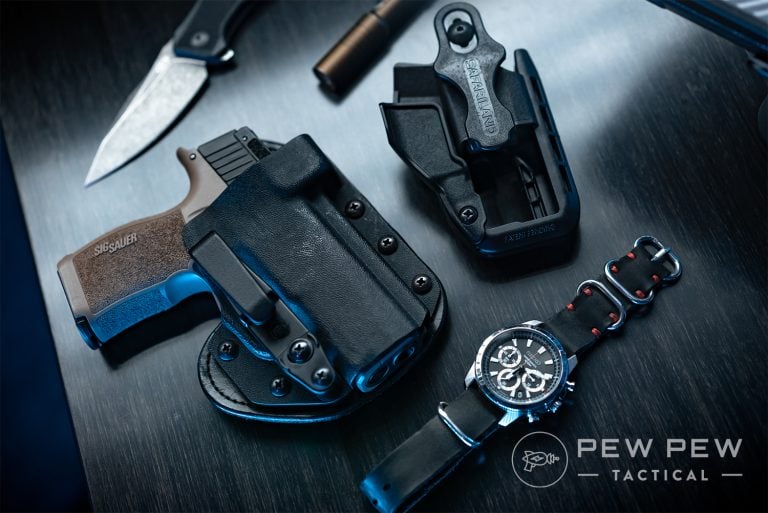







Leave a Reply